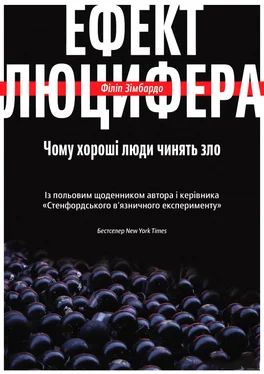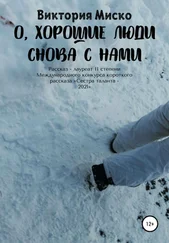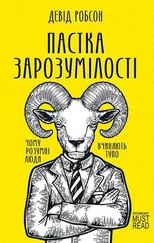Pilisuk, Boston: Little, Brown, 1971, C. 492-508; P. G. Zimbardo, E. B. Ebbesen, C. Maslach, Influencing Attitudes and Changing Behavior, 2nd ed., Reading, MA: Addison- Wesley, 1977; P. G. Zimbardo, C. E. Hartley, «Cults Go to High School: A Theoretical and Empirical Analysis of the Initial Stage in the Recruitment Process», Cultic Studies Journal 2, Spring-Summer 1985.—C. 91-147; P. G. Zimbardo, S. A. Andersen, «Understanding Mind Control: Exotic and Mundane Mental Manipulations”, Recovery from Cults, ed. M. Langone, New York: Norton Press, 1993) C. 104-25; P. G. Zimbardo, M. Leippe, The Psychology of Attitude Change and Social Influence, New York: McGraw-Hill, 1991.
Щоб більше дізнатись про принципи соціального впливу, див: Р. Чалдині, Психологія впливу, Харків: Клуб Сімейного дозвілля, 2015, укр. переклад—М. Скоробагатова; A. R. Pratkanis, "Social Influence Analysis: An Index of Tactics", in The Science of Social Influence: Advances and Future Progress, ed. A. R. Pratkanis, Philadelphia: Psychology Press, 2007; A. R. Pratkanis, E. Aronson, Age of Propaganda: The Everyday Use and Abuse of Persuasion, New York: W. H. Freeman, 2001; R. Levine, The Power to Persuade: How We (re Bought and Sold, New York: Wiley, 2003; Daryl Bern, Beliefs, Attitudes, and Human Affairs, Belmont, CA: Brooks/Cole, 1970; R. Petty, J. Cacioppo, Communication and Persuasion: Central and Peripheral Routes to Attitude Change, New York: Springer- Verlag, 1986; S. Hassan, Combatting Cult Mind Control, Rochester, VT: Park Street Press, 1988; B. Sagarin, S. Wood, «Resistance to Influence» in The Science of Social Influence: Advances and Future Progress, ed. A. R. Pratkanis, Philadelphia: Psychology Press, 2007).
J. M. Burger, «The Foot-in-the-Door Compliance Procedure: A Multiple-Process Analysis and Review», Personality and Social Psychology Review 3 (1999) C. 303-25.
J. Freedman, S. Fraser, “Compliance Without Pressure: The Foot-in-the-Door Technique”, Journal of Personality and Social Psychology 4 (1966) C. 195-202.
Більше інформації про соціально-корисне використання техніки «ноги у дверях» див: J. Schwarzwald, A. Bizman, М. Raz, «The Foot-in-the-Door Paradigm: Effects of Second Request Size on Donation Probability and Donor Generosity», Personality and Social Psychology Bulletin 9 (1983) C. 443-5; B. J. Carducci, P. S. Deuser, “The Foot-in-the-Door Technique: Initial Request and Organ Donation», Basic and Applied Social Psychology 5 (1984) C. 75-81; B. J. Carducci, P. S. Deuser, A. Bauer, M. Large, M. Ramaekers, «An Application of the Foot in the Door Technique to Organ Donation», Journal of Business and Psychology 4(1989) C. 245-49; R. D. Katzev, T. R. Johnson, «Comparing the Effects of Monetary Incentives and Foot-in-the-Door Strategies in Promoting Residential Electricity Conservation», Journal of Applied Social Psychology 14 (1984) C. 12-27; T. H. Wang, R. D. Katsev, «Group Commitment and Resource Conservation: Two Field Experiments on Promoting Recycling», Journal of Applied Social Psychology 20 (1990) C. 265-75; R. Katzev, T. Wang, «Can Commitment Change Behavior? A Case Study of Environmental Actions», Journal of Social Behavior and Personality 9(1994)) C. 13-26.
M. Goldman, C. R. Creason, C. G. McCall, «Compliance Employing a Two-Feet-in- the-Door Procedure», Journal of Social Psychology 114(1981)) C. 259-65.
Більше інформації про ефекти позитивних соціальних моделей див: J. Н. Bryan, М. A. Test, «Models and Helping: Naturalistic Studies in Aiding Behavior», Journal of Personality and Social Psychology 6 (1967)) C. 400-7; C. A. Kallgren, R. R. Reno, R. B. Cialdini, «А Focus Theory of Normative Conduct: When Norms Do and Do Not Affect Behavior», Personality and Social Psychology Bulletin 26 (2000)) C. 1002-12 ;R. A. Baron, C. R. Kepner, «Model's Behavior and Attraction Toward the Model as Determinants of Adult Aggressive Behavior», Journal of Personality and Social Psychology 14 (1970)) C. 335-44; M. E. Rice, J. E. Grusec, «Saying and Doing: Effects on Observer Performance», Journal of Personality and Social Psychology 32 (1975)) C. 584-93.
J. H. Bryan, J. Redfield, S. Mader, «Words and Deeds About Altruism and the Subsequent Reinforcement Power of the Model», Child Development 42 (1971) C. 1501-8; J. H. Bryan, N. H. Walbek, «Preaching and Practicing Generosity: Children's Actions and Reactions», Child Development 41 (1970) C. 329 - 53.
Більше інформації про маркування соціальної ідентичності, див: R. Е. Kraut, «Effects of Social Labeling on Giving to Charity», Journal of Experimental Social Psychology 9 (1973).—C. 551-62; A. Strenta, W. Dejong, «The Effect of a Prosocial Label on Helping Behavior», Social Psychology Quarterly 44(1981) C. 142-47; J. A. Piliavin, P. L. Callero, Giving Blood, Baltimore: Johns Hopkins University Press, 1991.
Robert S. McNamara et al.. Argument Without End: In Search of Answers to the Vietnam Tragedy, New York: Perseus Books, 1999; R. S. McNamara, B. Van deMark, In Retrospect: The Tragic Lessons of Vietnam, New York: Vantage, 1996; Також див. фільм: Errol Morris, The Fog of War: Eleven Lessons from the Life of Robert S. McNamara, 2003.
Коли в 1979 році вибухнула пожежа в супермаркеті Вулворт в Манчестері, більшість людей врятувалось, проте десятеро загинули, не скориставшись можливістю втекти. Голова пожежників повідомив, що вони померли, тому що продовжували слідкувати «ресторанному сценарію» а не «сценарію виживання». Вони закінчували трапезу і чекали, щоб заплатити рахунок, оскільки ніхто не може покинути ресторану, не заплативши рахунок. Ніхто не хотів встати першим і виділитись серед інших. Всі чекали і всі загинули.
Е. J. Langer, Mindfulness, Reading, MA: Addison-Wesley, 1989.
D. F. Halpern, Thought and Knowledge: An Introduction to Critical Thinking, 4th ed., Mahwah, NJ: Erlbaum, 2003.
C. Poche, P. Yoder, and R. Miltenberger. «Teaching Self-Protection to Children Using Television Techniques», Journal of Applied Be havior Analysis, vol. 21 (1988) C. 253-61.
D. Kahneman, A. Tversky, «Prospect Theory: An Analysis of Decision Under Risk,» Econometrica 47 (1979) C. 262-91; A. Tversky, D. Kahneman, «Loss Aversion in Riskless Choice: A Reference-Dependent Model», Quarterly Journal of Economics 106 (1991) C. 1039-61.
G. Lakoff, Don't Think of an Elephant: Know Your Values and Frame the Debate, White River Junction, VT: Chelsea Green, 2004; G. Lakoff, M. Johnson, Metaphors We Live By, 2nd ed., Chicago: University of Chicago Press, 2003.
Читать дальше












